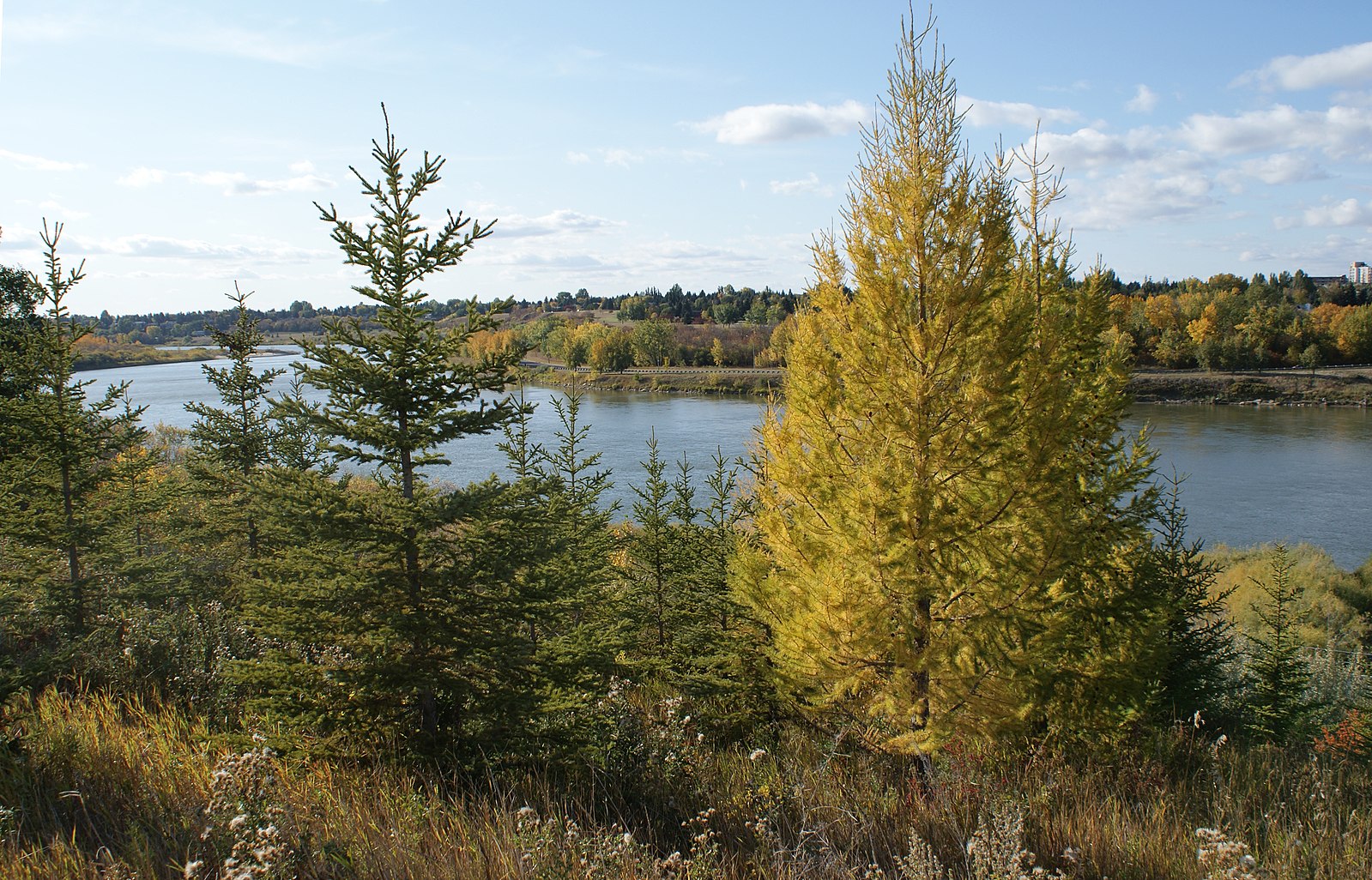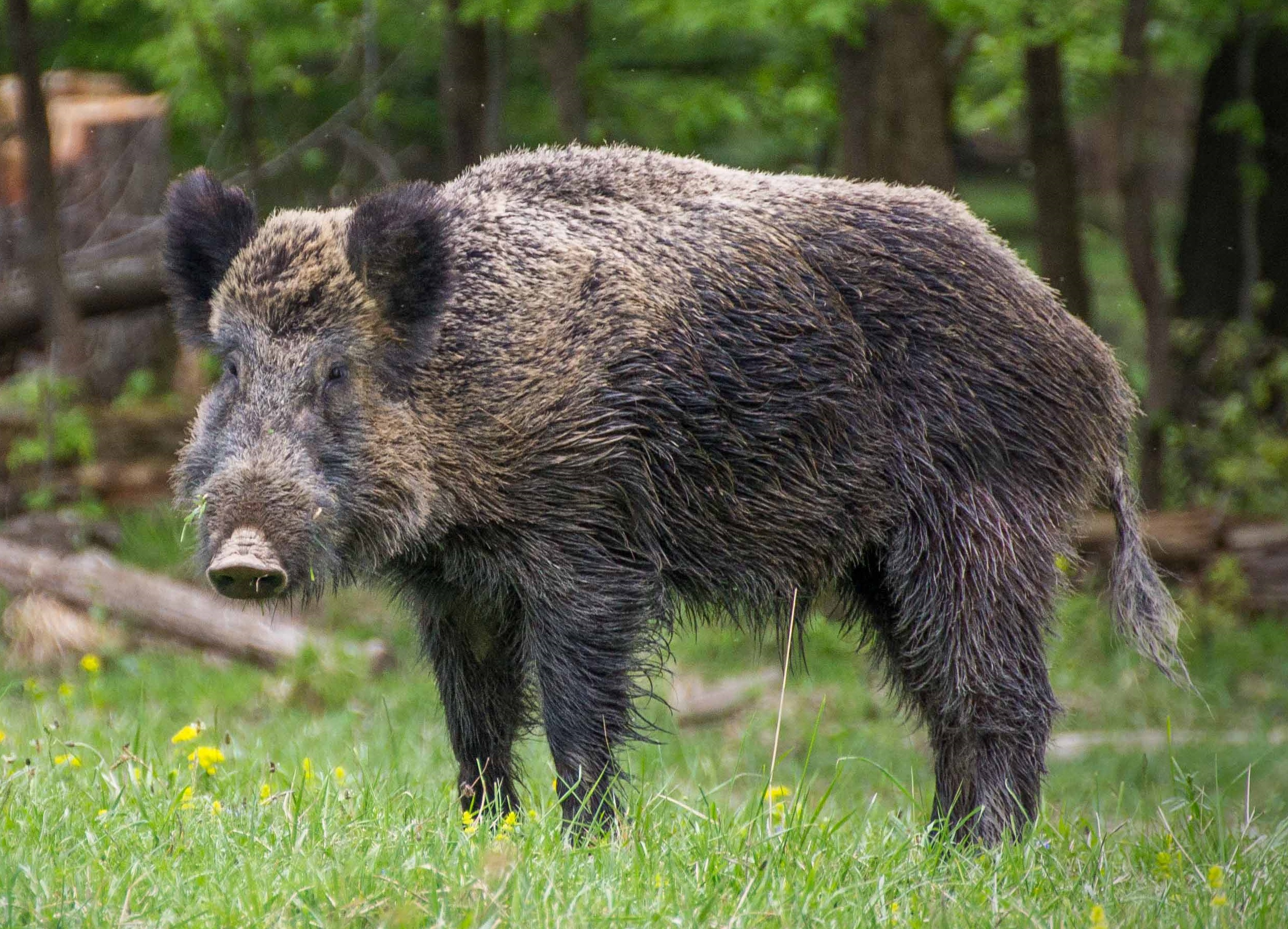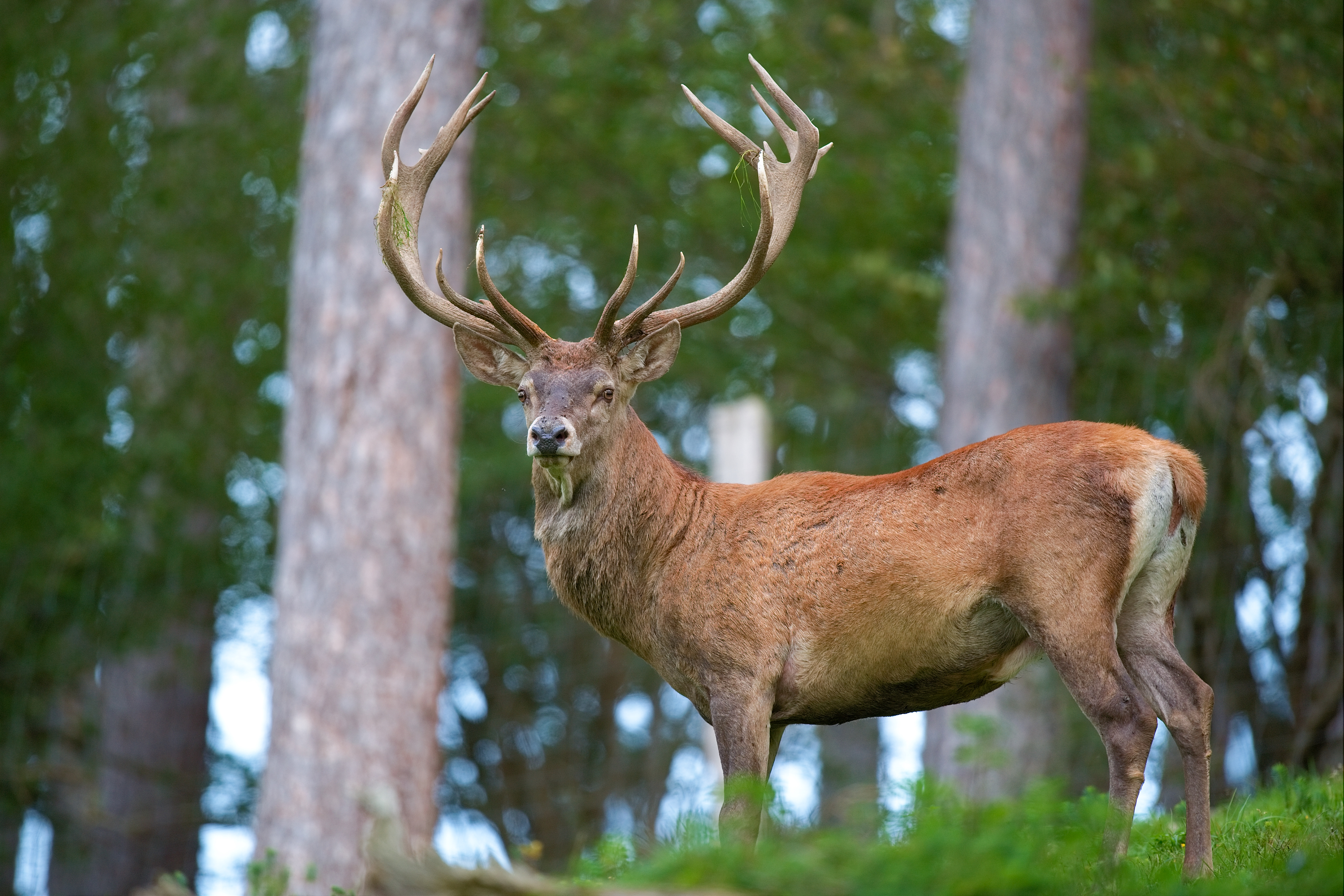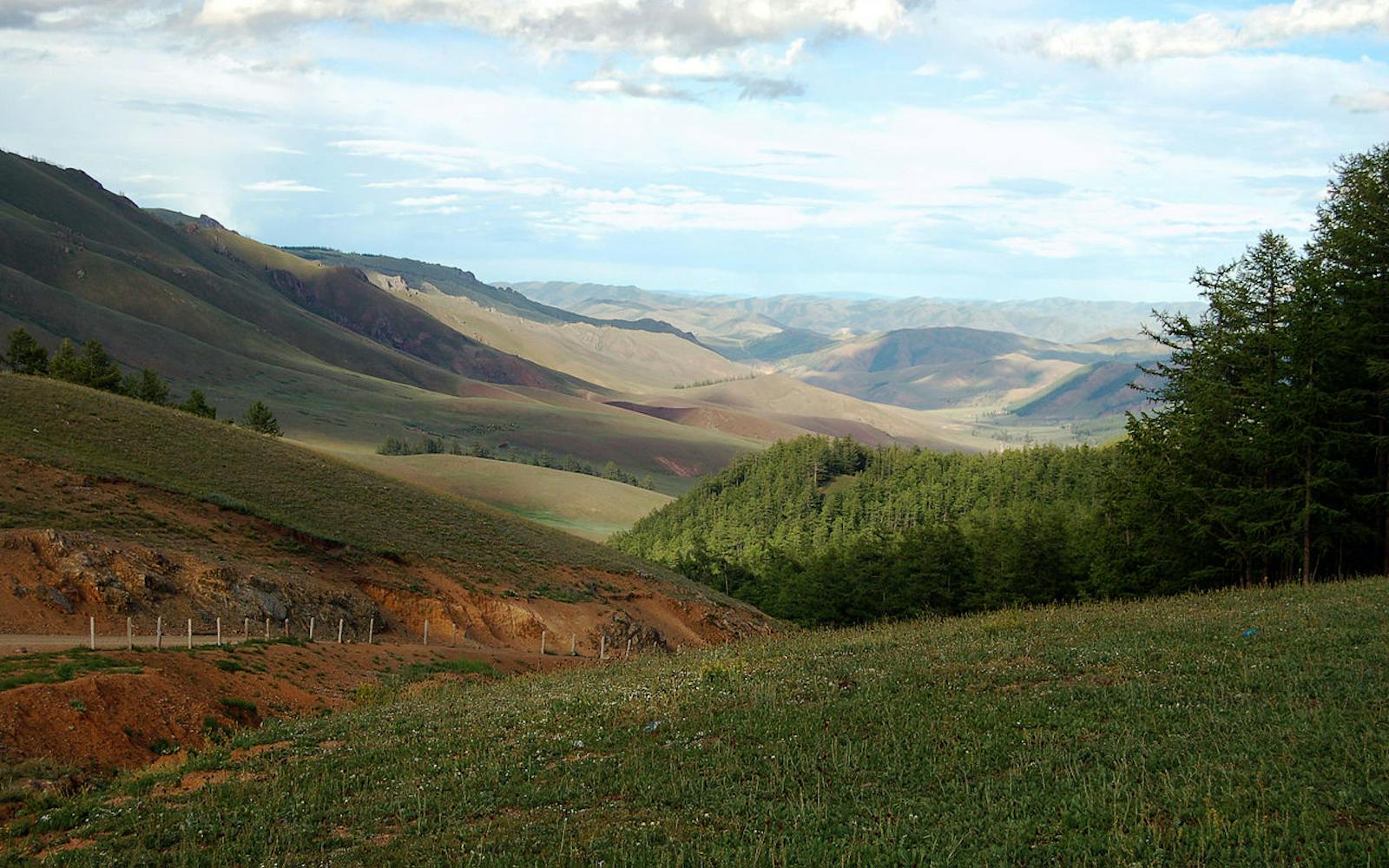Khangai Mountains Conifer Forests
The ecoregion’s land area is provided in units of 1,000 hectares. The conservation target is the Global Safety Net (GSN1) area for the given ecoregion. The protection level indicates the percentage of the GSN goal that is currently protected on a scale of 0-10. N/A means data is not available at this time.
Bioregion: Mongolian Grasslands, Alpine Meadows & Forest Steppe (PA44)
Realm: Eastern Eurasia
Ecoregion Size (1000 ha):
290
Ecoregion ID:
700
Conservation Target:
44%
Protection Level:
10
States: Mongolia
At the southern edge of the great boreal forests of Asia, the densely packed larches of the Khangai Mountains Conifer Forests grow on the moister northern aspect of mountains whilst the southern sides are grassland steppe. Siberian musk deers browse the lichens of the humid forests and cinereous vultures nest in the tall trees. The ecoregion is experiencing the effects of climate change in full force: temperatures during the short growing season of the forest’s larch trees have increased 1.73°C in the last 30 years.
This ecoregion is restricted to a narrow northern strip of the Khangai Mountain range of Mongolia, where dense conifer forests grow on the northern aspect of mountain slopes. There are many sources of mineral waters and springs, which are mainly hot and flow almost parallel to one another along tectonic faults in the northern slope of the range. The average annual temperature is -5.8°C (monthly averages of -31.2°C–14.8°C). The mean annual precipitation is around 224 mm.

The flagship species of the Khangai Mountains Conifer Forests ecoregion is the Siberian larch. Image credit: SriMesh, Wikimedia Commons
The flora of the Khangai region is diverse due to its location at the intersection between arid steppes of Central Asia, the boreal ecosystem of Northern Asia, and the high mountain ecosystem of Southern Siberia. Siberian larch forest dominates the relatively moist north-facing mountain slopes of the ecoregion, aspen and Siberian elm near rivers, and grasslands are found on south-facing slopes and in most valleys.
Undisturbed forest floors harbour beautiful flowering plants such as anomalous peony, martagon lily, Aconitum septentrionale, Aquilegia sibirica, Cerastium pauciflorum, Doronicum turkestanicum, Hedysarum inundatum, and Senecio nemorensis. South-facing grasslands are dominated by grasses (alpine oatgrass, tundra fescue, Chinese lyme grass) and sedges such as Carex pediformis. Berry-rich shrubs grow in rocky areas, including blackcurrant, blue honeysuckle and barberry. There are 26 plant species endemic to the Khangai mountains.

Wild boar. Image credit: Creative Commons
Endangered Mongolian marmot and vulnerable Siberian musk deer are both supported by the ecoregion, alongside a rich mammal fauna including moose, wapiti, wild boar, grey wolf, brown bear, Siberian flying squirrel, large-eared vole, and Altai weasel. This is a haven for forest and mountain bird species: cinereous vulture and bearded vulture scan the area for wolf kills, while boreal owls and Daurian partridge specialize in the forest habitat. Grass steppes in this isolated area is home to the endangered Saker falcon, the vulnerable white-throated bushchat, and Pallas’s cat.
Industrial timber harvest was widespread in the second half of the 20th century before political change in 1990, leading to unsystematic selective logging by the rural population. The forest-steppe area is home to mobile pastoralists who keep mixed herds of sheep, goats, cattle, yak, and horses. A new National Conservation Park, Tarvagatai Nuruu, was established in 2000 and some of this ecoregion is covered by the northern part of the park.
The effects of climate change are already being felt in the ecoregion, with growing season temperatures increasing more than 1.5°C since 1985. Drought is disrupting growth patterns and killing trees on forest edges. Livestock penetrate the forests along the edges, and further into the interior when patches of forest are small, accentuating forest fragmentation. The number of goats owned by herders has greatly increased and cashmere has become the main source of cash income. As goats are the most generalist of grazers, overgrazing is an increasing issue. The addition of selective logging and grazing to climate change makes the forests particularly vulnerable.

Red deer. Image credit: Creative Commons
The priority conservation actions for the next decade will be to: 1) increase connectivity of protected areas, linking to more extensive boreal forest further north; 2) prevent damaging logging and overgrazing practices from further fragmenting the forest and causing fires; and 3) develop and implement conservation plans for the ecoregion in anticipation of climate change impacts.
Citations
1. WWF. 2018. Central Asia: West central. [Online]. [Accessed 25th November 2019]. Available from: https://www.worldwildlife.org/ecoregions/pa0512
2. Joint Research Centre of the European Commission. 2019. The Digital Observatory for Protected Areas (DOPA) Explorer 4: Khangai Mountains conifer forests. [Online]. [Accessed 25 November 2019]. Available from: https://dopa-explorer.jrc.ec.europa.eu/ecoregion/80512
3. Ariuntsetseg, L., Boldgiv, B. and Golde, A. 2008. Main Habitats and Floristic Diversity in the Tarvagatai Nuruu National Park – General View. Mongolian Journal of Biological Sciences. 6, pp.11-20.

.png?auto=compress%2Cformat&w=300)

